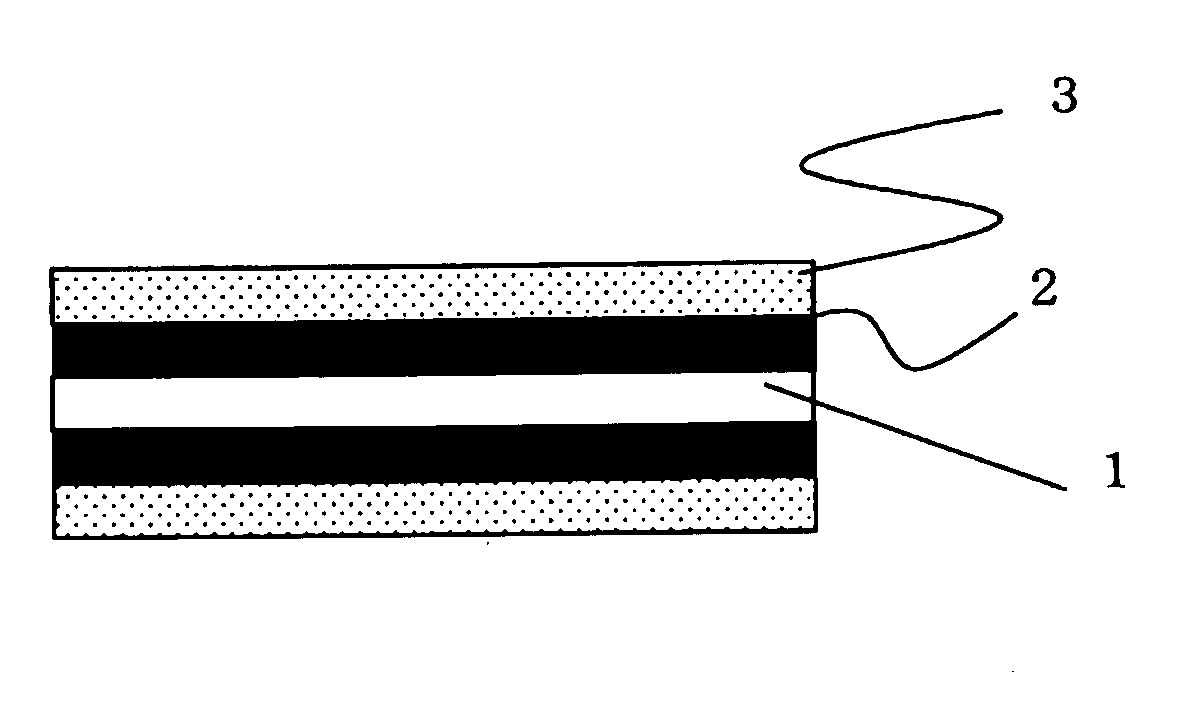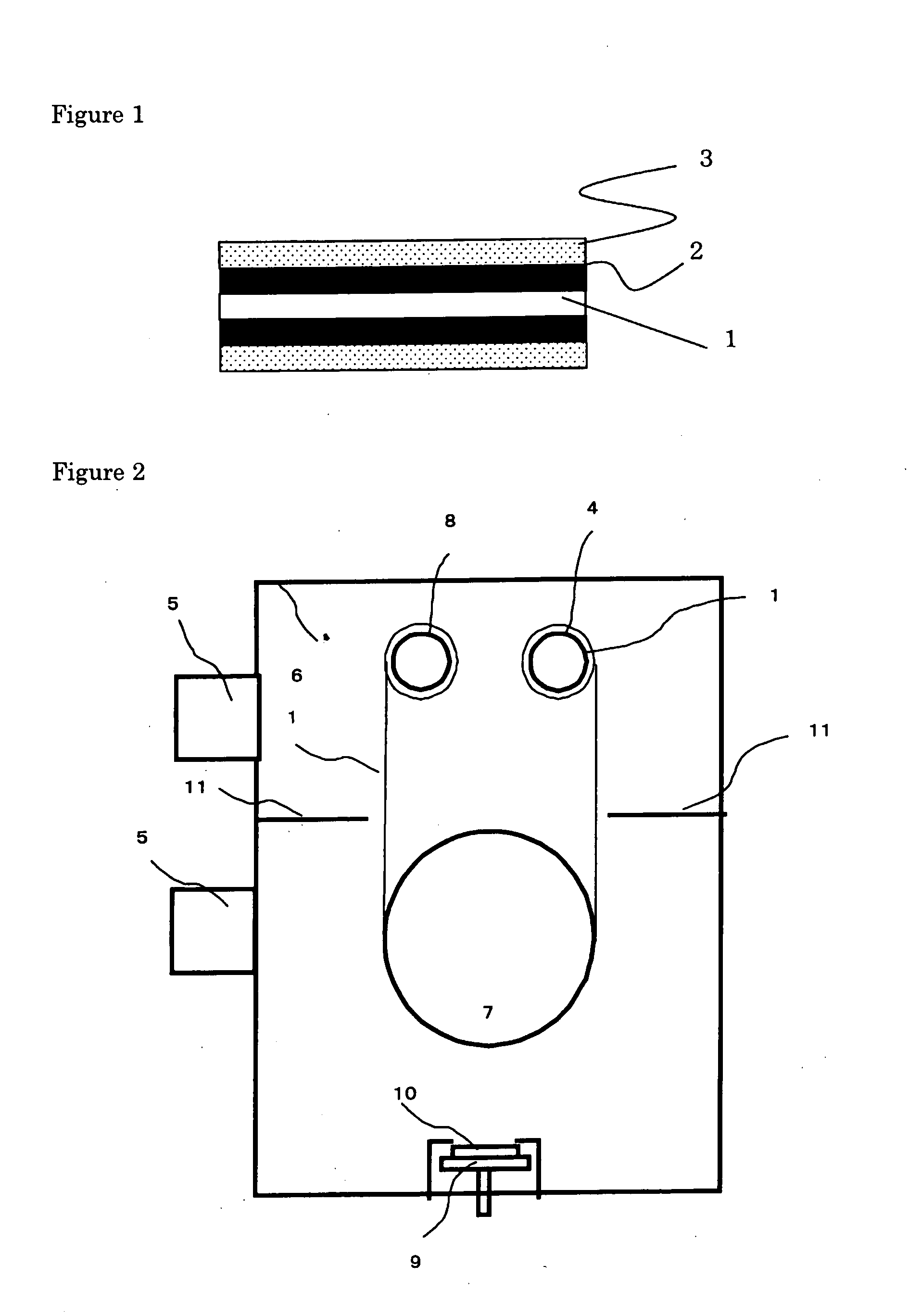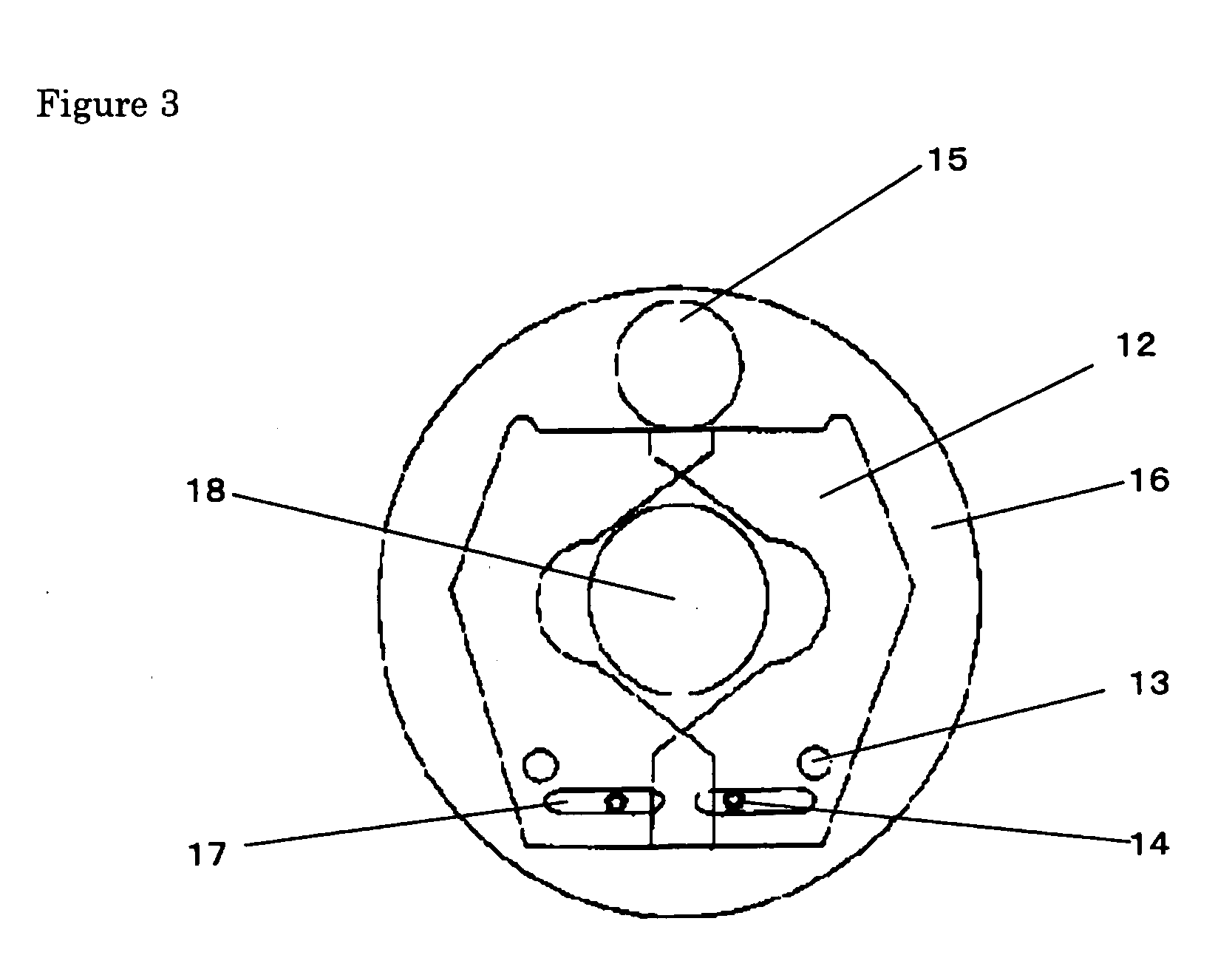Heat-resistant, light-shielding film, production thereof, and aperture and light intensity adjusting device using the same
a technology of light-shielding film and aperture, which is applied in the direction of light beam reproducing, instruments, transportation and packaging, etc., can solve the problems of unstable images, blades grazing with each other to create noise repeatedly, and create large noise, etc., to improve surface wear resistance, friction resistance and electroconductivity, and reduce the high reflectivity of the metallic film
- Summary
- Abstract
- Description
- Claims
- Application Information
AI Technical Summary
Benefits of technology
Problems solved by technology
Method used
Image
Examples
example 1
[0139]The metallic light-shielding film and metal oxide film were formed by a reel-equipped sputtering unit illustrated in FIG. 2. First, a target 10 was set on a magnetron cathode 9 facing a cooling can roll 7 in the sputtering unit, where the target 10 provided a film material. A film transfer section, comprising a roll 4 from which the rolled film was transferred, cooling can roll 7 and roll 8 on which the film was reeled, was isolated from the magnetron cathode 9 by a diaphragm 11. Next, a rolled resin film base 1 of polyimide (PI) was set on the roll 4. It was surface-treated by sand blasting under controlled discharge timing, discharge pressure and transfer rate to have the surface of fine irregular structure with an arithmetic average height Ra of 0.5 μm on each side. The polyimide (PI) film was dried at 200° C. or higher before it was treated by sputtering.
[0140]Next, contents in a vacuum chamber 6 were evacuated by a vacuum pump, e.g., turbomolecular pump, and discharges we...
example 2
[0146]A heat-resistant, light-shielding film was prepared under the same conditions as in Example 1, except that thickness of the metallic film was changed to 50 nm.
[0147]The heat-resistant, light-shielding film prepared was evaluated for optical characteristics and heat resistance in a manner and under conditions similar to those for Example 1. Temperature of the film surface was observed by an infrared radiation thermometer through an inspection window of quartz glass in the reel-equipped sputtering unit while the metallic film and oxide film were being sputtering-treated in the same manner as in Example 1. It was 180 to 220° C., representing an equivalent temperature to those observed in Example 1.
[0148]It was found to have characteristics equivalent to those observed in Example 1 with respect to optical density, reflectivity, surface gloss and so forth. It was confirmed to have a surface resistance of 120Ω / □ and arithmetic average surface height Ra of 0.4 μm. It was also found t...
example 3
[0150]A heat-resistant, light-shielding film was prepared under the same conditions as in Example 1, except that thickness of the metallic film was changed to 150 nm.
[0151]The heat-resistant, light-shielding film prepared was evaluated for optical characteristics and heat resistance in a manner and under conditions similar to those for Example 1. Temperature of the film surface was observed by an infrared radiation thermometer through an inspection window of quartz glass in the reel-equipped sputtering unit while the metallic film and oxide film were being sputtering-treated in the same manner as in Example 1. It was 180 to 220° C., representing an equivalent temperature to those observed in Example 1.
[0152]It was found to have characteristics equivalent to those observed in Example 1 with respect to optical density, reflectivity, surface gloss and so forth. It was confirmed to have a surface resistance of 90Ω / □ and arithmetic average surface height Ra of 0.3 μm. It was also found t...
PUM
| Property | Measurement | Unit |
|---|---|---|
| Temperature | aaaaa | aaaaa |
| Temperature | aaaaa | aaaaa |
| Length | aaaaa | aaaaa |
Abstract
Description
Claims
Application Information
 Login to View More
Login to View More - R&D
- Intellectual Property
- Life Sciences
- Materials
- Tech Scout
- Unparalleled Data Quality
- Higher Quality Content
- 60% Fewer Hallucinations
Browse by: Latest US Patents, China's latest patents, Technical Efficacy Thesaurus, Application Domain, Technology Topic, Popular Technical Reports.
© 2025 PatSnap. All rights reserved.Legal|Privacy policy|Modern Slavery Act Transparency Statement|Sitemap|About US| Contact US: help@patsnap.com



